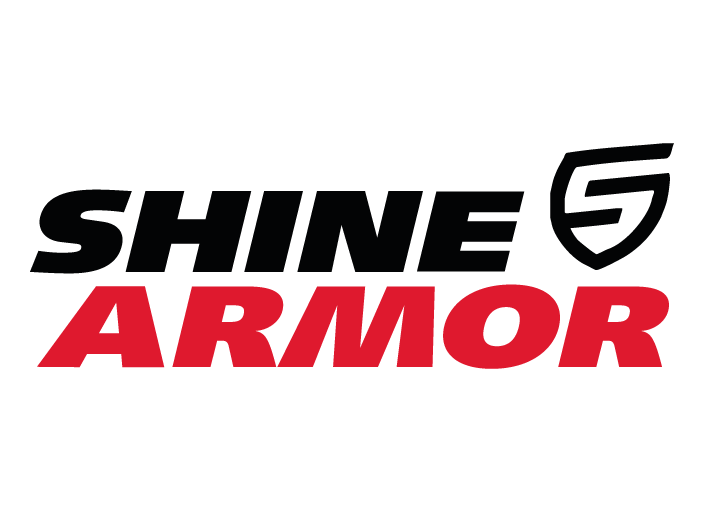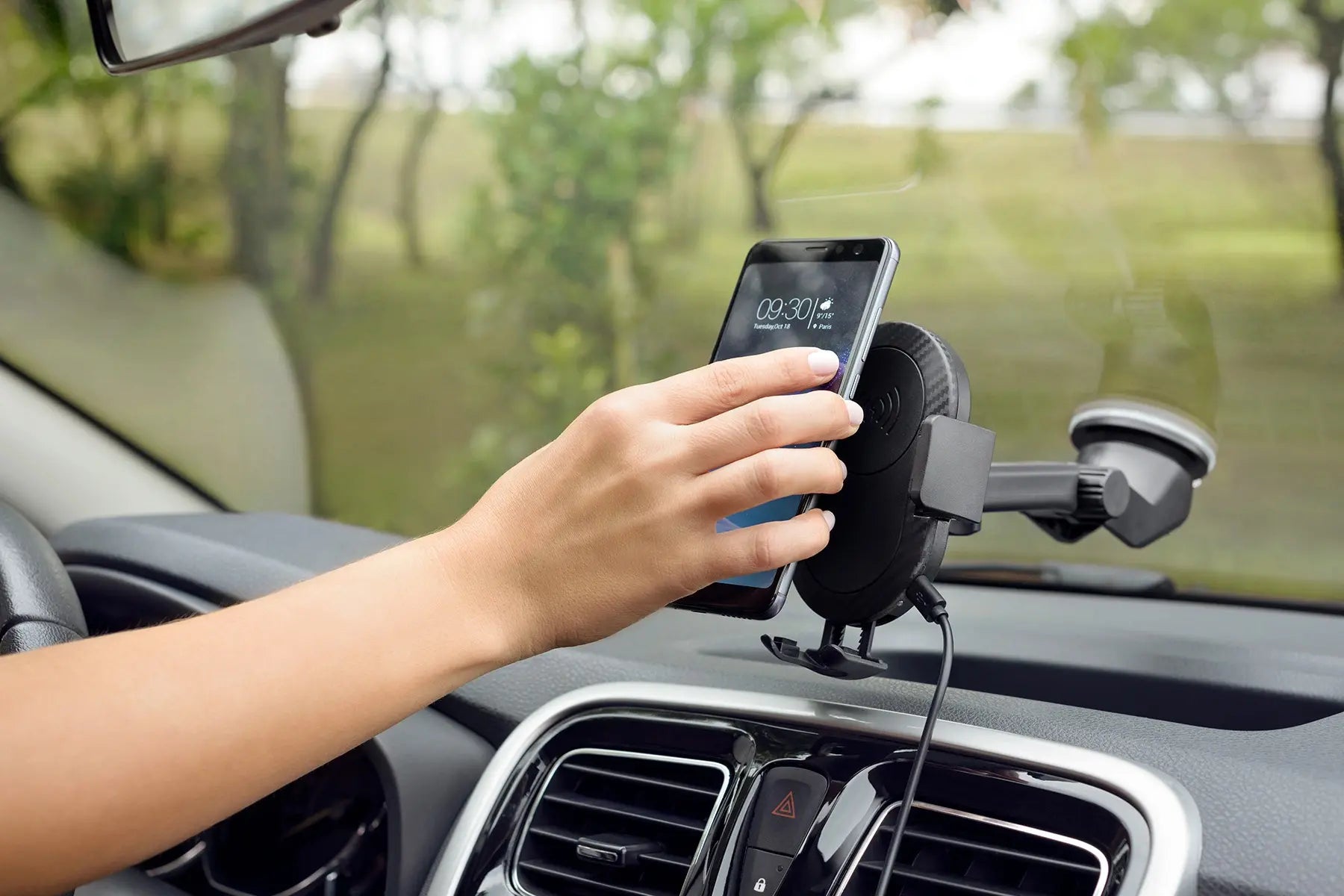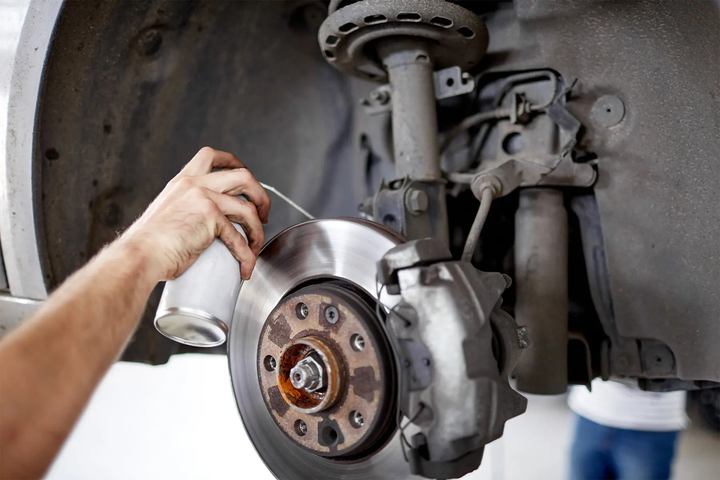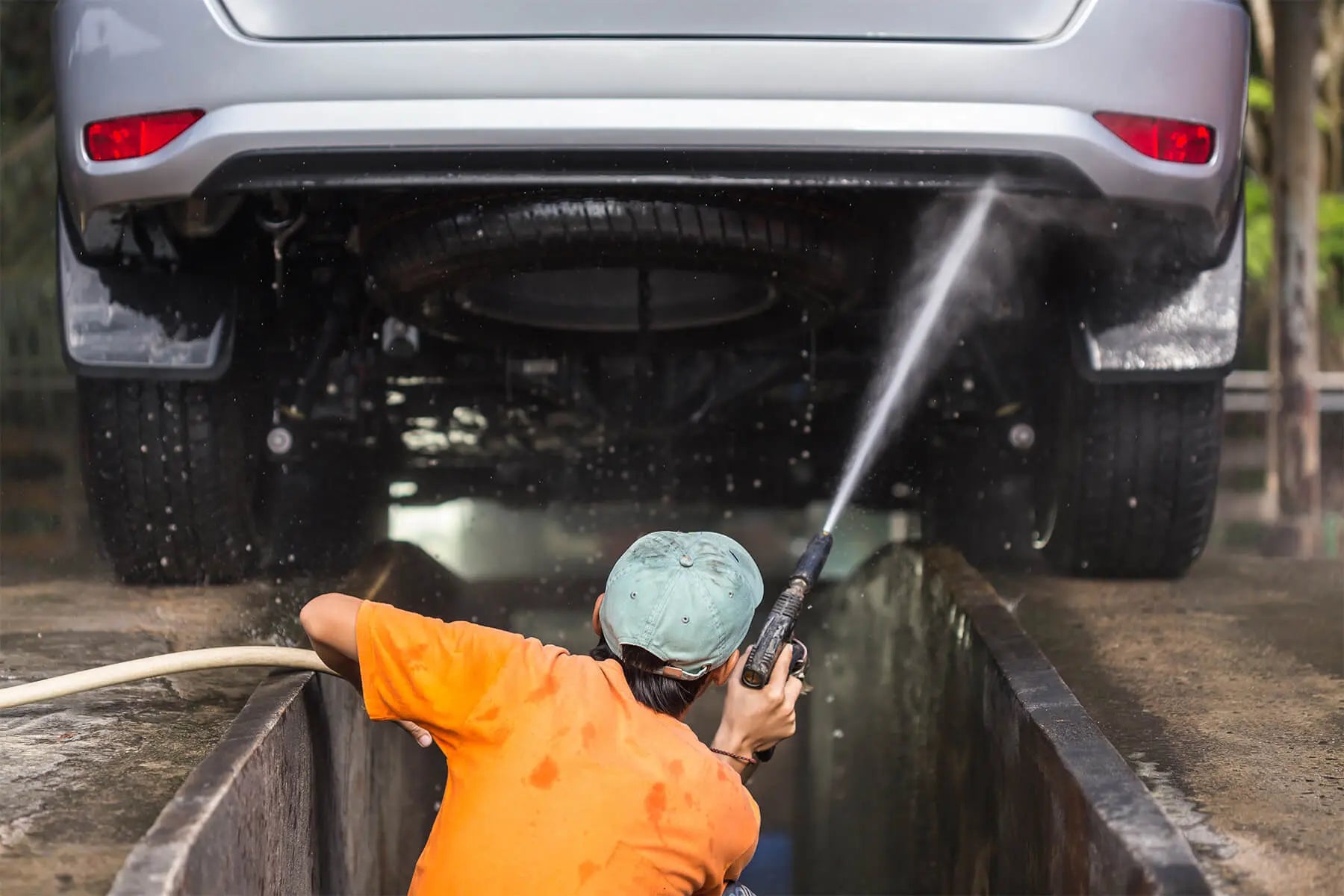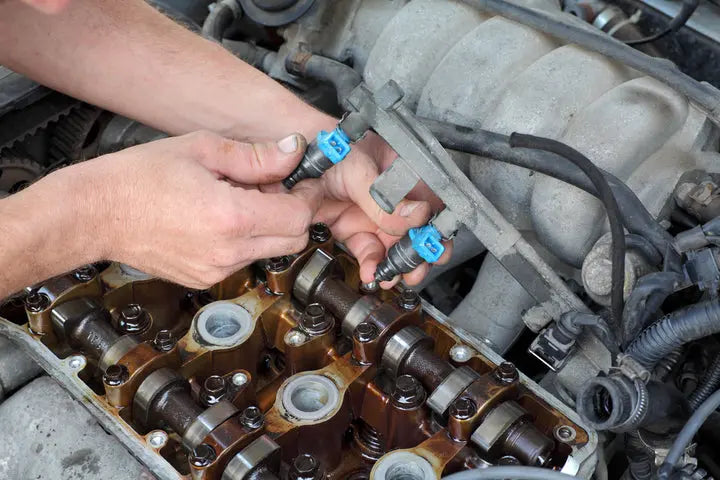
Fuel injectors are essential for a smooth-running engine, but over time, they can get clogged with dirt and carbon deposits, leading to issues like rough idling, reduced efficiency, and power loss. Fortunately, cleaning your fuel injectors can help restore their performance and improve your car’s overall fuel economy. Let’s explore how to clean fuel injectors without removing them. Read on to learn more in this article of shine armor blog!
Related car detailing products:
- Fortify Quick Coat
- Car Upholstery and Interior Cleaner
- Odor Eliminator
- Performance Booster Oil Additive
- Spray Wax Quick Coat
- Nano Glass Coating
Signs of Dirty Fuel Injectors
Before diving into the cleaning process, it’s essential to recognize the symptoms of bad fuel injectors. If you notice any of the following there’s a high chance that your fuel injectors require cleaning:
Rough Idling
Dirty or clogged fuel injectors may disrupt the smooth idling of your engine leading to noticeable vibrations.
Engine misfire
Fuel injectors need a balanced air-to-fuel ratio to function correctly. When fuel injectors get clogged by grease and debris, this causes misfires or a jerking sensation when starting the car, accelerating, and driving.
Poor Fuel Economy
A decrease in fuel efficiency is another noticeable sign of fuel injector issue. Your engine is having a hard time delivering fuel due to a lack of balance between the air and fuel mixture, which can lead to increased fuel consumption.
Engine Performance Issues
If your vehicle struggles to accelerate or experiences a loss of power, it could indicate that the fuel injectors are not delivering fuel optimally.
Step-by-Step Guide: Cleaning Fuel Injectors Without Removing Them
Park your car in a well-ventilated area. Ensure that its engine is turned off and cool. Now, let’s clean your fuel injectors.
What You’ll Need:
A reliable cleaning kit. Your cleaning kit should include a cleaning solution and a fuel injector cleaner canister. Ensure that your kit is compatible with your vehicle’s engine type.
Detach the Fuel Rail
Open your car hood and locate the fuel injector. Then, disconnect the fuel rail from the injector by removing its bolts or loosening down the clamp depending on your car’s make and model.
Prepare Your Cleaning Kit
Pour your cleaning solution into the cleaner canister until it is full. Carefully hang the canister on the open hood.
Connect Canister Pipe to Fuel Rail
Connect the other end of the canister, which is a pipe, to the disconnected fuel rail. Some cleaning kit includes various connectors to cater to different car models.
Remove the Fuel Tank Cover
The cleaning kit will send pressurized cleaning solvent into the fuel injectors to remove any debris, so make sure to remove the fuel tank cover. This prevents pressure buildup that can lead to combustion.
Take Out the Fuel Pump Relay
Remove the fuel pump from the fusebox to prevent it from sending fuel to the engine and avoid significant damage while cleaning the injectors.
Attach the Air Compressor
Connect the air compressor to the canister’s air intake connector with PSI settings around 40-50. This will pressurize the cleaning solvent into the fuel injectors.
Start Your Car
Once you properly set up everything, run the engine and let it idle until the cleaning solution is all used up. Next, turn off your engine and disconnect the fuel injector cleaning kit from your car.
Reconnect
Reattach everything you’ve removed, including the fuel rail, hose, fuel tank cover, and pump relay.
Test Your Car
Now that you’ve successfully cleaned the fuel injectors, start the engine to make sure that it is running smoothly. Be vigilant for any leaks or unusual noises that may indicate underlying issues. If you encounter any strange noises, take the necessary steps to trace the source or seek professional assistance to resolve the problem.
Your car should be running optimally after a successful cleaning process and following the instructions above.
Cleaning Fuel Injectors Q&A
Q: Is it safe to clean fuel Injectors without removing them?
A: Absolutely! Cleaning fuel injectors without removing them is generally safe if the proper method is used. The most common approach is using a fuel injector cleaning kit that attaches to the fuel rail. It’s crucial to use reputable cleaning products and not damage the injectors or engine components.
Q: Can I also remove the fuel injectors when cleaning them?
A: Removing them results in a deeper clean, but it’s not always necessary. Also, removing and cleaning fuel injectors can be time-consuming and requires the attention of a professional mechanic. Avoid removing them if you have minimal experience.
Q: Can I clean the fuel injectors myself if I have no mechanical experience?
A: While cleaning them yourself is possible, it is recommended to have some mechanical knowledge or seek professional help for a more thorough cleaning.
Q: How often should I clean my fuel injectors?
A: How often you should clean depends on your vehicle’s age and maintenance history. As a general rule, cleaning every 30,000 to 60,000 miles is advisable
Q: Can clogged fuel injectors damage my engine?
A: Yes, clogged injectors can lead to poor fuel combustion, potentially causing damage to the engine over time.
Q: How can I keep fuel injectors clean?
A: Opt for high-quality, reputable fuel to minimize the risk of injector clogging. Having regular fuel system cleaning and filter replacements also help.
Q: What are some ways to maintain fuel system health?
A: Regularly inspect fuel filters and keep your tank above half full to prevent the fuel pump from drawing in sediment that may accumulate at the bottom of the tank.
Related blog posts:
